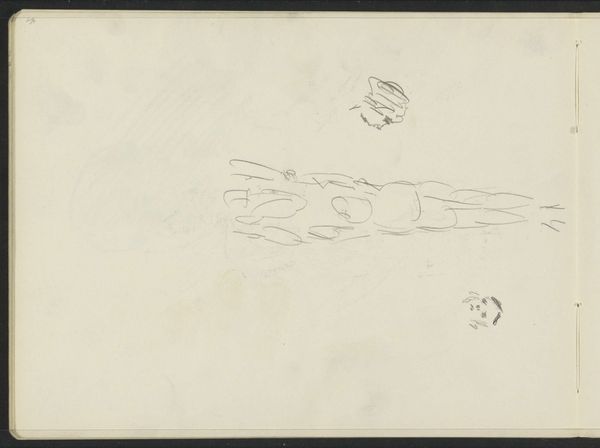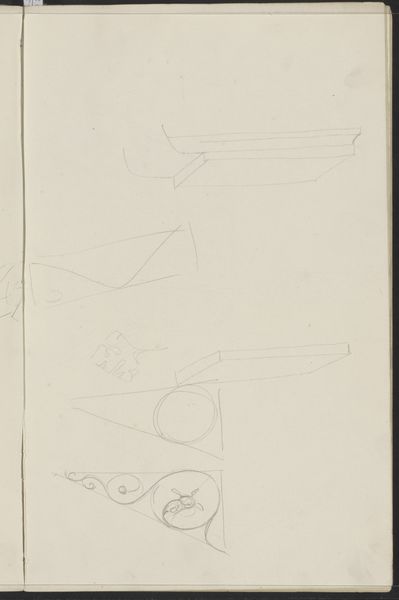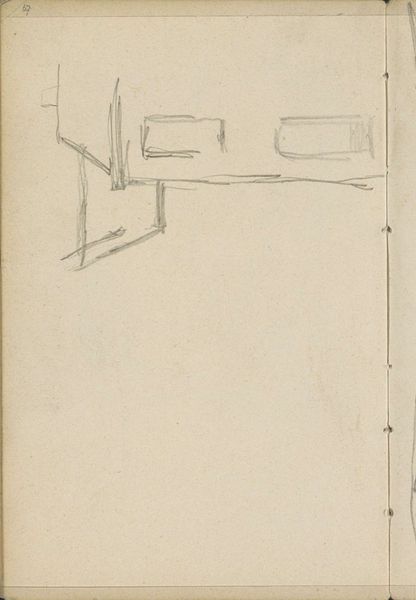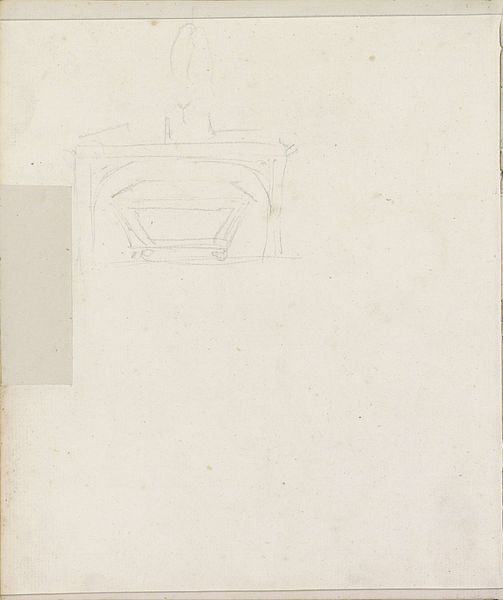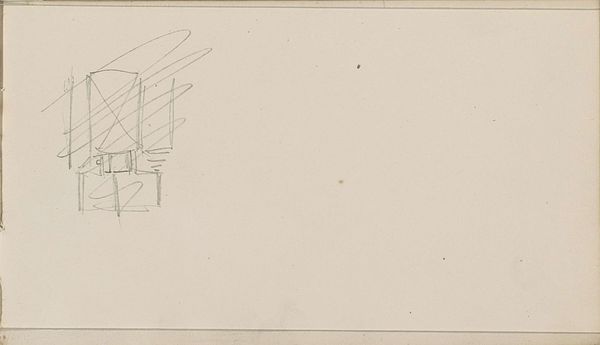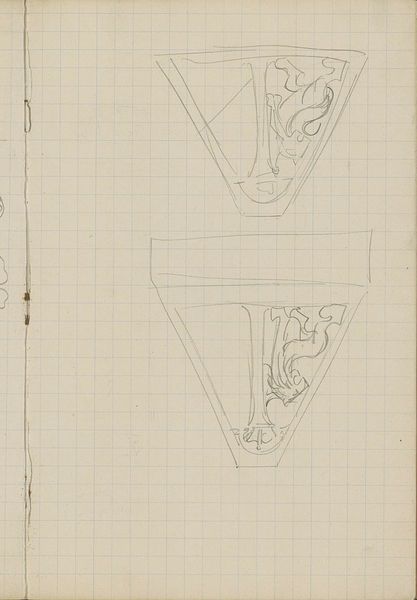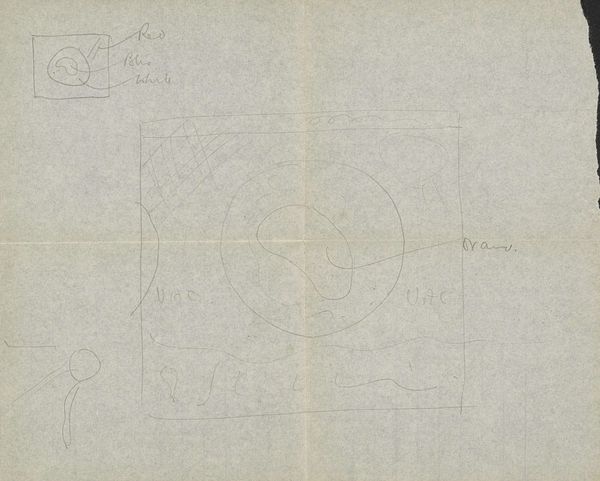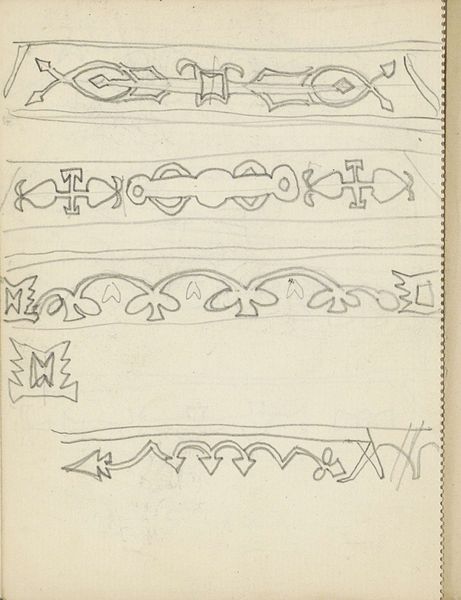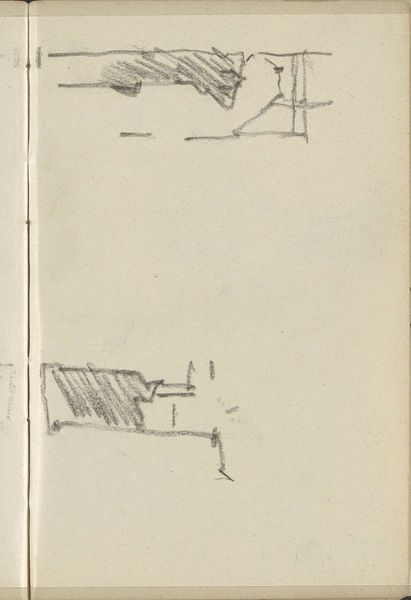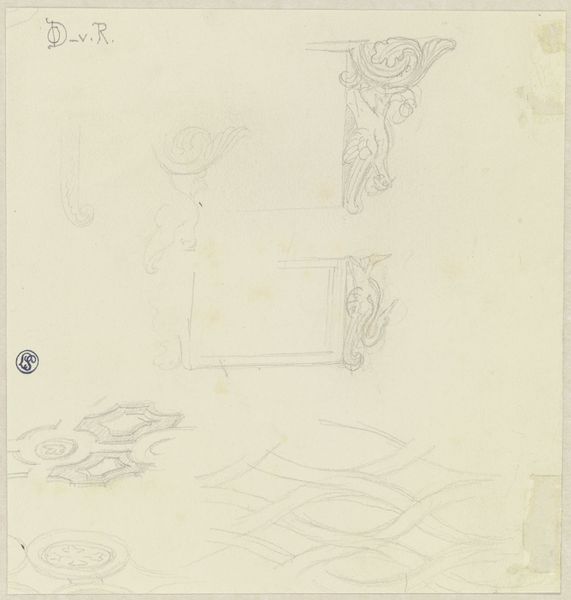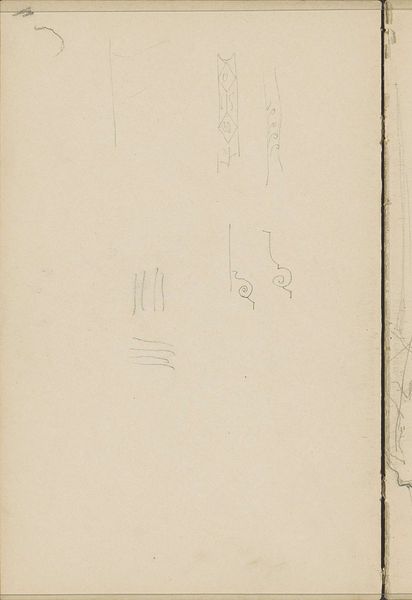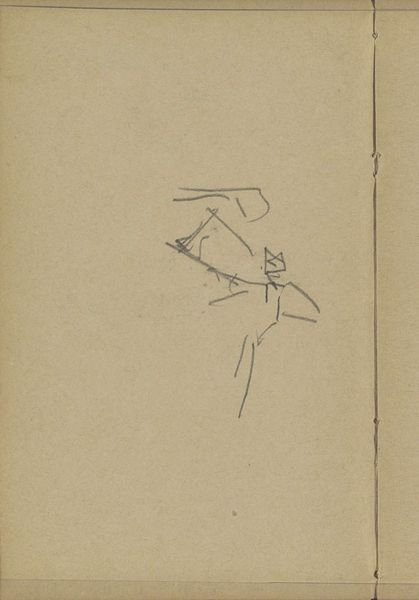
drawing, paper, pencil
#
drawing
#
aged paper
#
light pencil work
#
sketch book
#
hand drawn type
#
paper
#
form
#
personal sketchbook
#
idea generation sketch
#
fading type
#
geometric
#
pencil
#
ink colored
#
line
#
sketchbook drawing
#
sketchbook art
#
modernism
Copyright: Rijks Museum: Open Domain
Curator: Before us, we have "Ontwerpen voor een monogram," Designs for a Monogram, created around 1919 by Reijer Stolk. It's a pencil drawing on paper currently held in the Rijksmuseum collection. The page has clearly aged, offering an intimate glimpse into the artist's sketchbook. Editor: There's a fragility to it, isn’t there? A sense of uncovering a private world. The pale pencil lines on the aged paper lend it an ethereal, almost ghost-like quality. It reminds me of architectural fragments or coded messages left for future eyes. Curator: Precisely. Stolk, active during a period of significant artistic transformation, captures the Modernist emphasis on geometric form. We see various letterforms and ornamental devices, studies in creating a personal emblem. Note the way he combines classic shapes with modern sensibility, an exploration of identity rendered through visual language. It’s an idea generation sketch, really, showing different possible paths. Editor: That central, almost winged circle—is it intended to evoke classical emblems? Like winged solar discs of ancient cultures or heraldic symbols of nobility? Curator: Undoubtedly. Symbols accrue meanings, and here, Stolk pulls from the vast well of established visual vocabulary. These monogram designs weren’t just about initials; they represented status, affiliation, and a constructed personal brand. The modern person, the modern enterprise seeking their own visual mark in the increasingly industrialized and commercial culture. Editor: It's striking how potent these little forms become. Consider the weight that logos or trademarks carry now; they signify so much beyond a simple image. What’s amazing to me is to see the initial formation, almost an alchemical beginning. There’s magic in transforming identity to visual form, the psychological impact of seeing our ideals mirrored back at us. Curator: Indeed. Stolk’s sketchbook offers a rare, unguarded insight into that transformative process, reflecting how deeply intertwined visual symbols and societal values really are. Editor: Absolutely, now when I see commercial logos I'm going to have a better understanding of how they have been so cleverly designed and their ability to convey potent values, history, and symbolism.
Comments
No comments
Be the first to comment and join the conversation on the ultimate creative platform.

